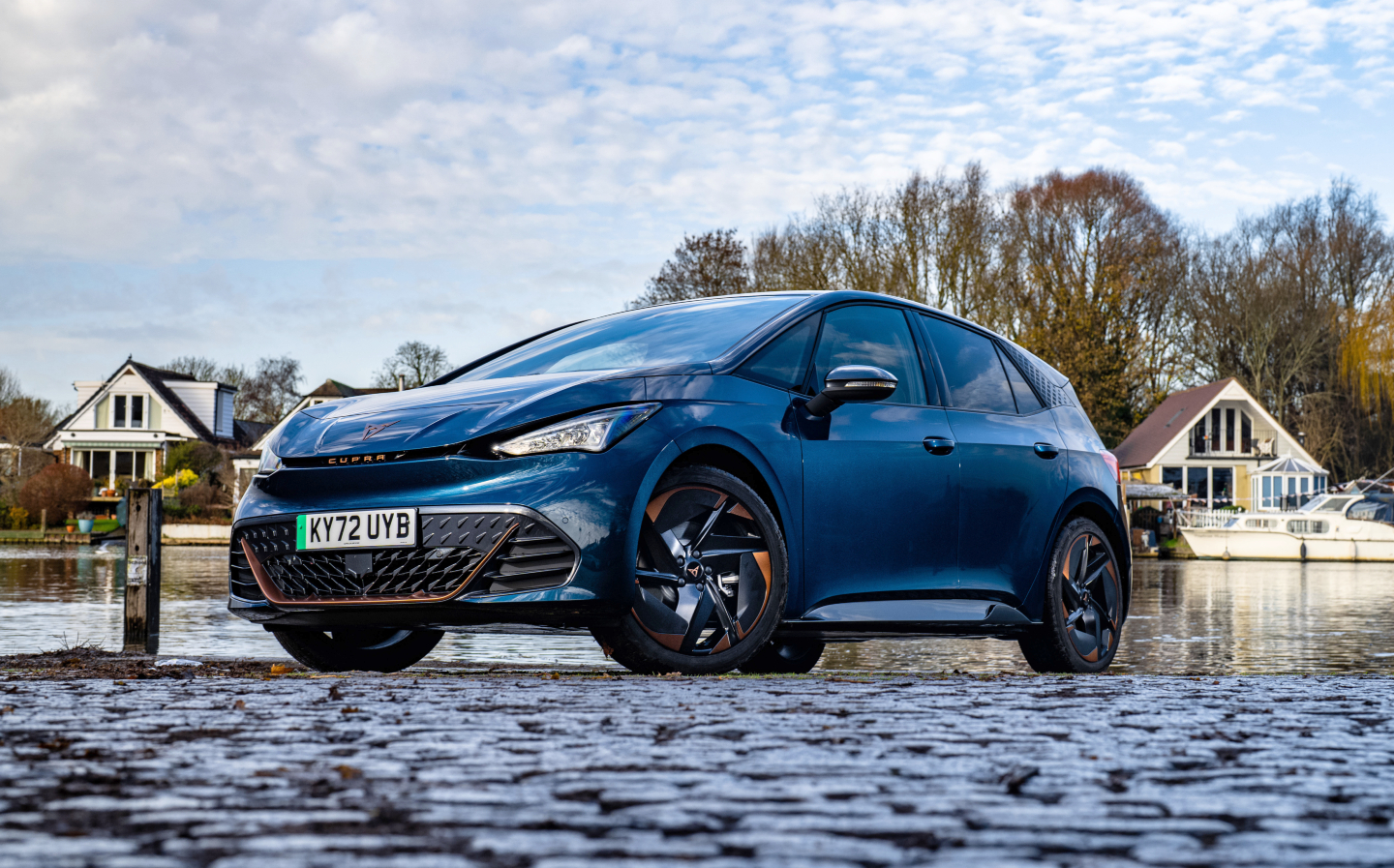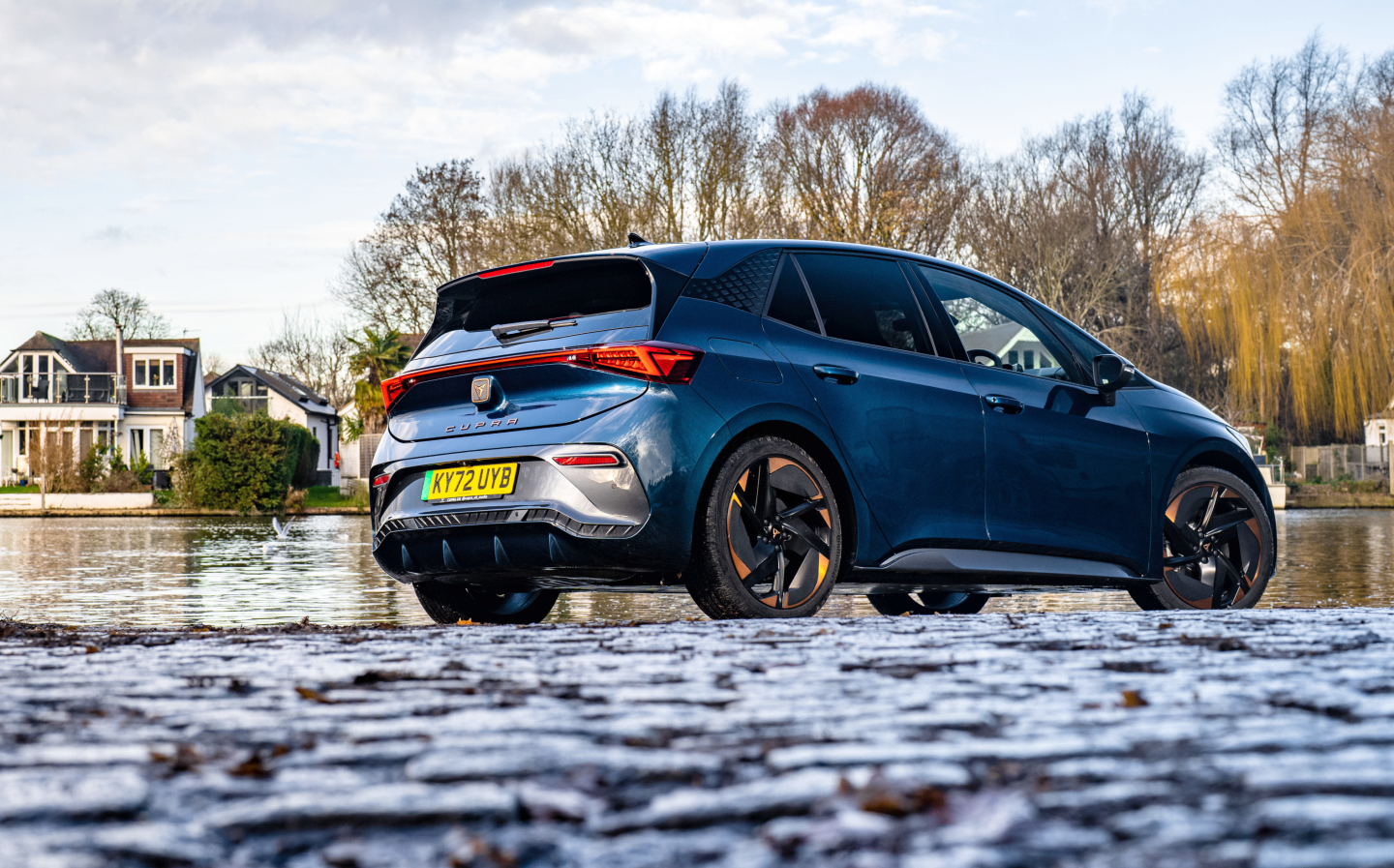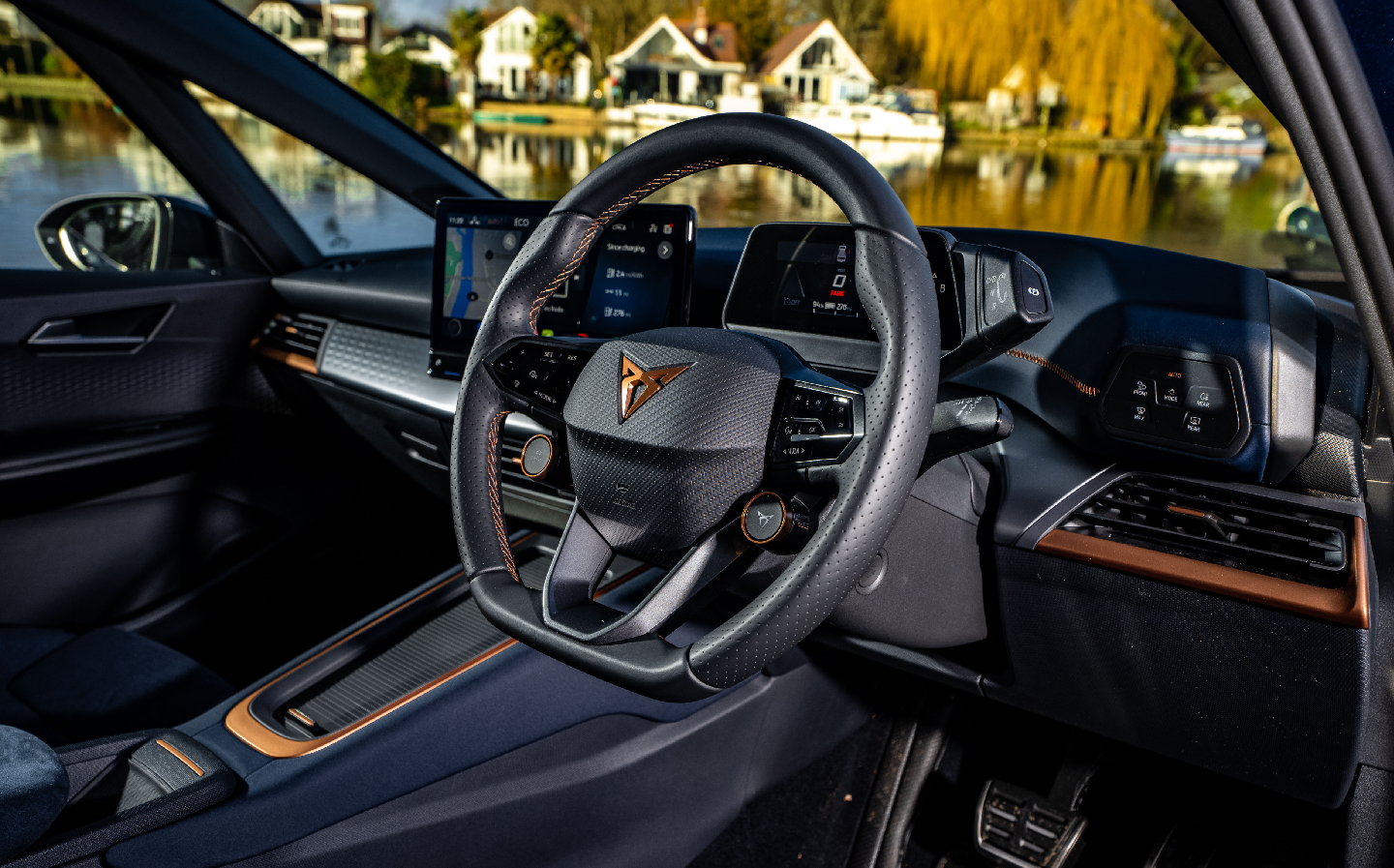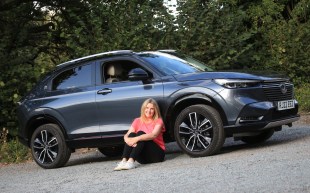Extended test: 2022 Cupra Born review
Looks aren't everything but the Born is off to a good start
Specifications
- Model 72-reg Cupra Born 77kWh V3 230PS e-Boost
- Cupra Born priced from £36,475 OTR
- Price for 77kWh V3 230PS (as tested) £43,735 (£48,205) OTR
- Cost options fitted Dynamic Pack £830; Aurora Blue Dinamica seats £195; Premium Metallic paint (Aurora Blue) £880; Heat Pump £970; Beats Sound System £470; Tech pack M £540; Cargo pack £340; 20″ Blizzard alloy wheels £245
- Drivetrain Permanent magnet synchronous electric motor + 82kWh battery (77kWh usable)
- Transmission Single speed (automatic), rear-wheel drive
- Max power output 228bhp
- Max torque 229 lb ft
- Kerb weight 1,950kg
- Luggage capacity (rear seats in place) 385 litres
- Top speed 99mph
- Acceleration 0-62mph: 7sec
- Electric range (combined WLTP) 335 miles
- Max charging speed 135kW DC
- Charging time (best scenario @ 135kW) 5-80% in 36 mins
- Official consumption (combined WLTP) 3.55-3.96 miles per kWh / 17.5-15.7kWh/100km
- CO2 emissions 0g/km
- Road tax Free
- BIK tax payable (2023/24) 2%
- Insurance group 28P (as tested)
Test details
Test period December 2022 – June 2023
Starting mileage 70 miles
Test updates
- January 17, 2023 The Cupra Born, rivals and pricing — does it make sense on paper?
- March 1, 2023 What’s it like to drive?
- April 14, 2023 The good, the Born and the ugly
- May 31, 2023 The honest truth about living with an electric car
January 17: The Cupra Born, rivals and pricing — does it make sense on paper?
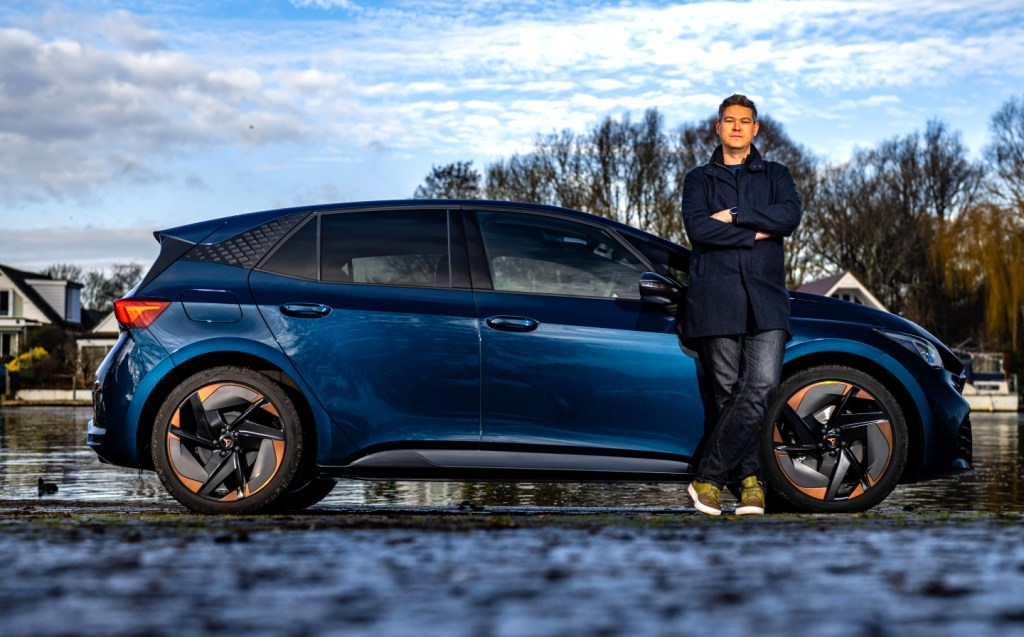
Normally when we request a new car for an extended test, the brand’s press officer will ask if there’s any particular version we’d like to try, then they see if they have something that fits the bill already “on fleet” – or perhaps available at a dealer. This Cupra Born was a first for me, though, as I was told to go to the Cupra website and configure the car I wanted, right down to colour and options packs, and to send over the resulting unique code for them to place the order.
I won’t lie, as someone who has only ever used a configurator to create dream cars, or for researching articles, using one to create a car to my own specifications that would then be built for real at the Zwickau plant in Germany was exciting. Especially as I wasn’t paying for it.*
So that’s why the car you see in the pictures is fully loaded. Top trim level? Tick. More powerful motor? Well, naturally. Cost option paint job? Yep, it’ll look better in photos. Heat pump? Well, that’ll help enormously with range during these winter months. Upgraded Beats Sound System? Our readers must know if it’s worth the extra cost. I went for the mid-spec wheels because I think they look best and would be easiest to clean (hello, mid-life) but by the time I’d finished the final price, as you can see above, was just over a grand shy of £50,000.
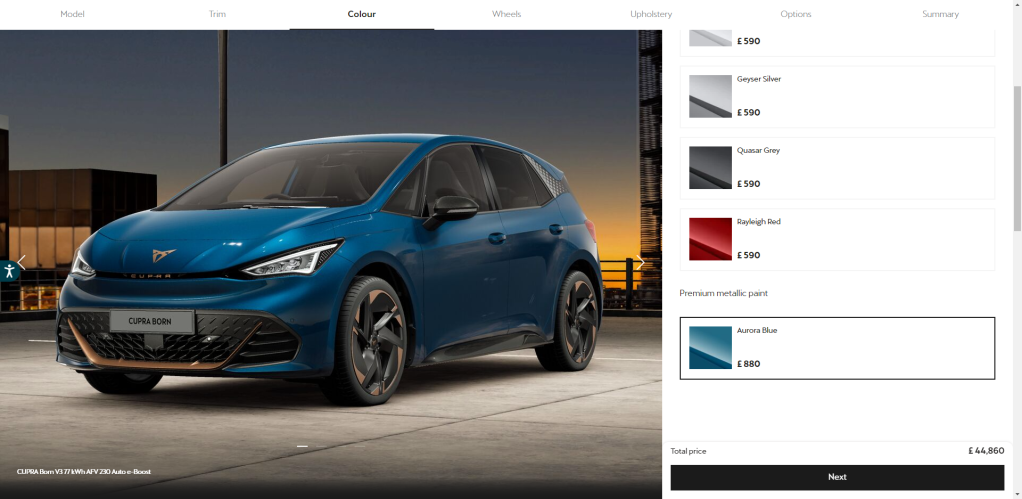
Even without options, the range-topping Cupra Born V3 with the 77kWh battery and more powerful motor (call e-Boost) will set you back £43,735, which seems like a lot for a family hatchback. So let’s consider your other options for that price with a similar range (335 miles per charge officially, though it may come as no surprise that I’ve not got near that yet — more on real-world range in a future update):
The 305-mile Tesla Model 3 costs from £42,990; the Skoda Enyaq iV 80 (which uses the exact same battery) costs from £42,925; a top spec Hyundai Kona Electric costs from £39,900 but has a range of “up to 300 miles”; the new Kia Niro EV in top spec costs from £42,295 and has a range of up to 285 miles.
And let’s not forget the VW ID.3, on which the Born is based (Cupra is part of the Volkswagen Group). That’s only available with the smaller 58kWh battery at the moment, providing an advertised range of 265 miles, and in one trim level (Life) for upwards of £37,140.
The biggest head-turner for buyers (and worry for the established brands) may be the newcomer MG4 Trophy Long Range, which at £32,495 and with a range of 270 miles per charge is very attractive on price. But then again you could go for the entry-level Born V1 with the 58kWh battery, which is still good for 264 miles (officially), at a cost of £36,475.
In other words, though there are cheaper hatchback EVs on the scene, the Cupra Born is competitive on price with most established rivals. Still, it has its work cut out to convince buyers not to go elsewhere. So what I’ll be looking at over the next five months is whether it’s worth it, highlighting the good points and the bad without any sugar-coating. I’ve already started a list of gripes, in fact — I’ll update you on those next month, but there’s also plenty that I really like about the car so far. There are also plenty more images to come, so bookmark this page.
Feel free to ask my questions along the way, either on Twitter (@wdron) or in the comments below.
- Mileage today 606 miles
- Distance since start 536 miles
- Indicated long term consumption 2.9 miles/kWh
If you’d like to ask me a question about the car, please message me on Twitter or comment below; I try to check comments every week.
Follow @wdron Tweet to @wdron* After six months the car is sold on nearly-new, so this arrangement is a great deal for the carmakers given the coverage they get. Unless we hate the car, of course.
March 1, 2023: What’s it like to drive?
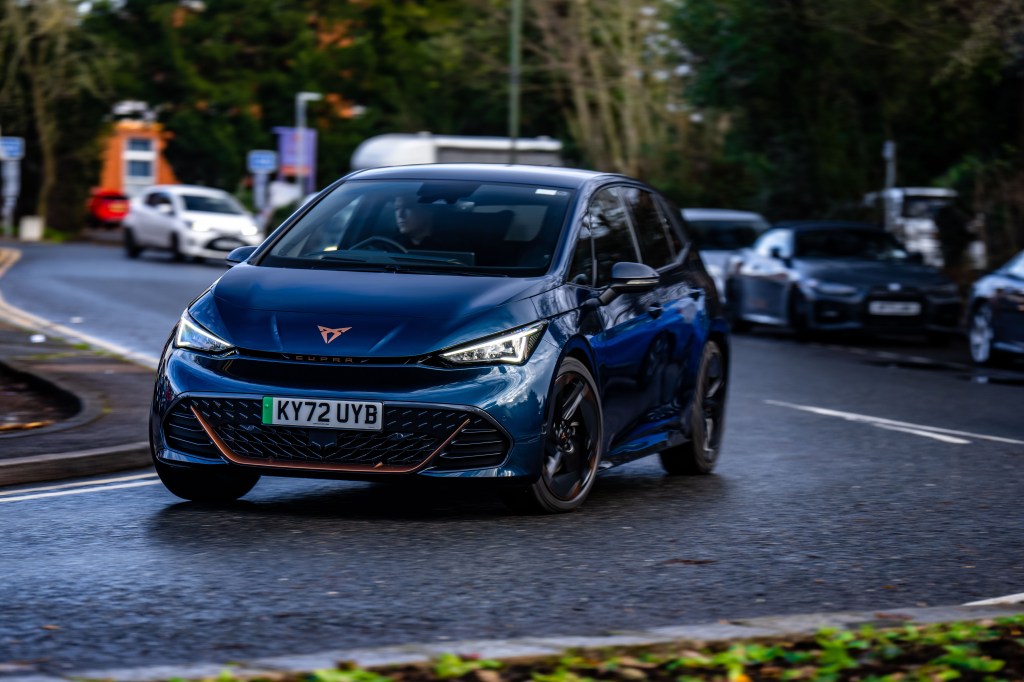
I have been running the Born for a while now and put more than a thousand miles on the clock, so have a fairly granular feeling for the way it drives, but I still remember the first time I took it out on the road and the immediate sense of relief that this wasn’t an EV with rock-hard suspension that was going to rattle my teeth and annoy my family. Cupra has engineered the ride beautifully, even with the largest 20in wheels fitted (bigger alloys means shorter tyre sidewalls, and therefore a harsher ride).
In fact, the way the Cupra glides over broken surfaces is a joy. Having previously driven a Ford Mustang Mach-E, which has rock-hard suspension (addressed by Ford with new suspension set-up from around August last year, so I hear), the Born is proving a joy to drive daily.
It’s also fun to drive quickly, though early talk of the Born being a hot hatch EV is not accurate — its 228bhp and 229 lb ft of torque is more than adequate for speedy acceleration but it’s not a car that will set your pants on fire. There isn’t that raw, visceral surge of performance (and the noise that goes with it) from petrol-powered hot hatches such as the Honda Civic Type R, BMW M135i or Mercedes-AMG A35. And it’s a long way off the shocking performance of something like a Tesla Model 3 Performance, which can get from standstill to 62mph in 3.1sec. Even a Hyundai Ioniq 5 is quicker in a sprint, in fact.
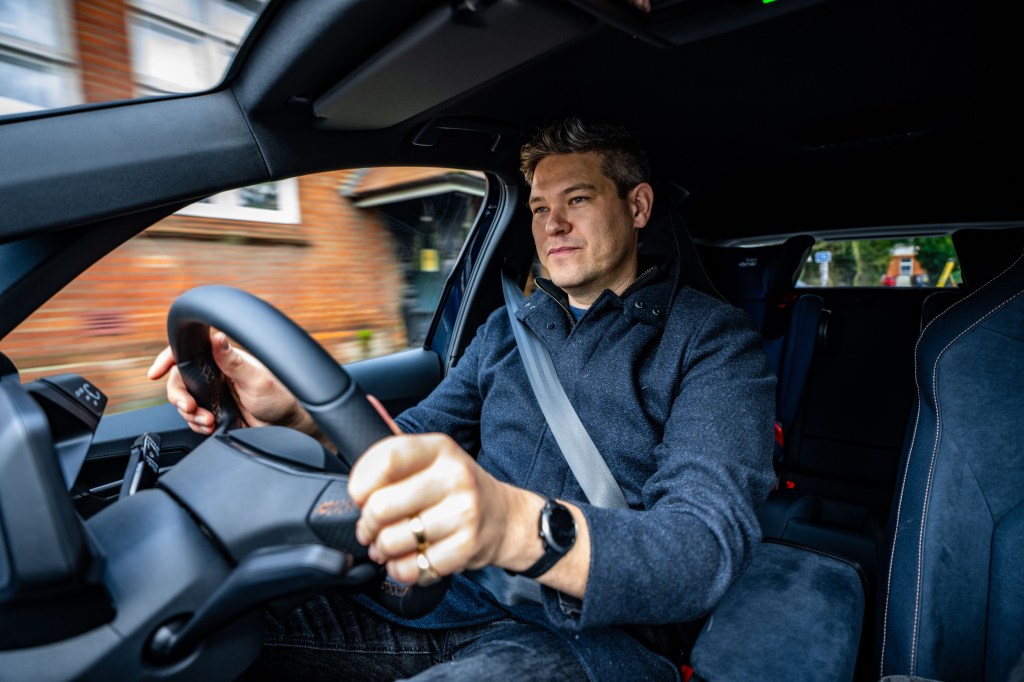
But while I wouldn’t say no to a bit more poke, for the fun factor while exiting a corner, if I’ve learnt anything from driving electric cars for over a decade it’s that acceleration speed is good for bragging rights only. What the Born possesses that many over EVs don’t is a finesse to the chassis. Its pliant suspension means that though a corner there’s just enough pitch and roll to transmit its intentions to the driver while still keeping the body in check.
I have experienced understeer, where the front of the car wants to keep going in a straight line rather than turn, though that was on cold road with cold tyres. Another journalist I spoke to about the Born, Dan Trent, took his car on a racing circuit and described it as “a bit under-tyred at the front”, which I wholehearted agree with when driving hard, but most drivers won’t notice this on the road. In all but the most extreme circumstances, the front end feels pointy and it’s a fun car to drive on country roads.
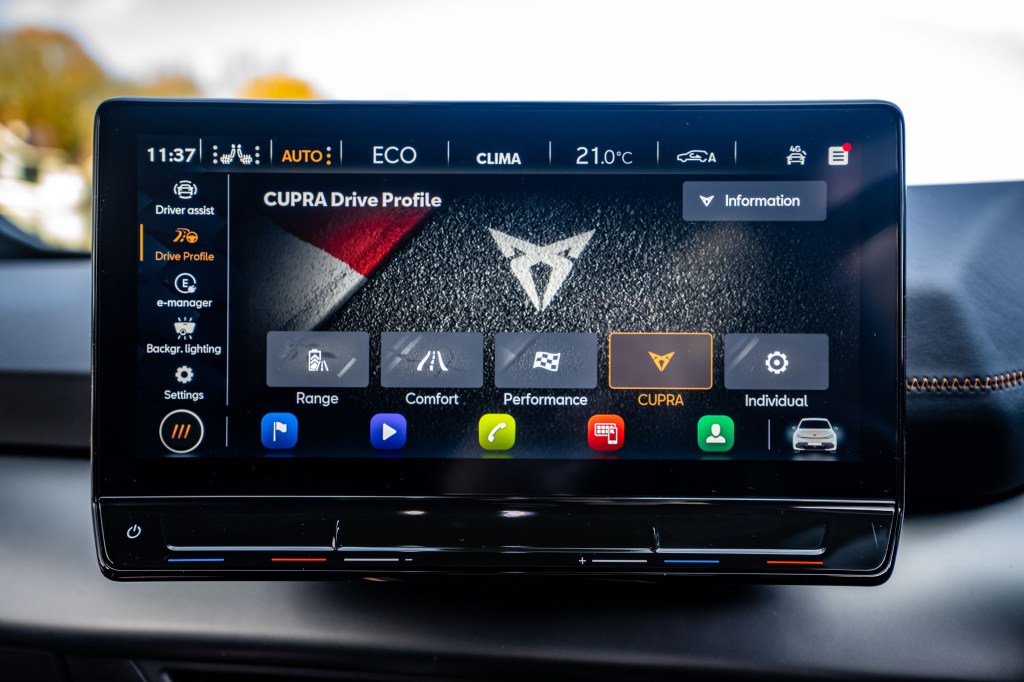
I have tried provoking oversteer (where the back end loses grip and wants to overtake the front) but there’s no joy there partly because there’s not quite enough poke but also because of the electronic stability systems, which intervene to prevent wheelspin.
All of which is a reminder that this is a warm hatch at best — fun, for sure, but not a car best suited to track days. For me and most families, though, it’s a really lovely thing to drive around on British roads.
Next time I’ll go into depth about the practicality of the car and its suitability for parents, along with some of the niggles and positives I’ve encountered so far.
If you’d like to ask me a question about the Born, please message me on Twitter or comment below; I try to check comments every week.
Follow @wdron Tweet to @wdronApril 14, 2023: The good, the Born and the ugly
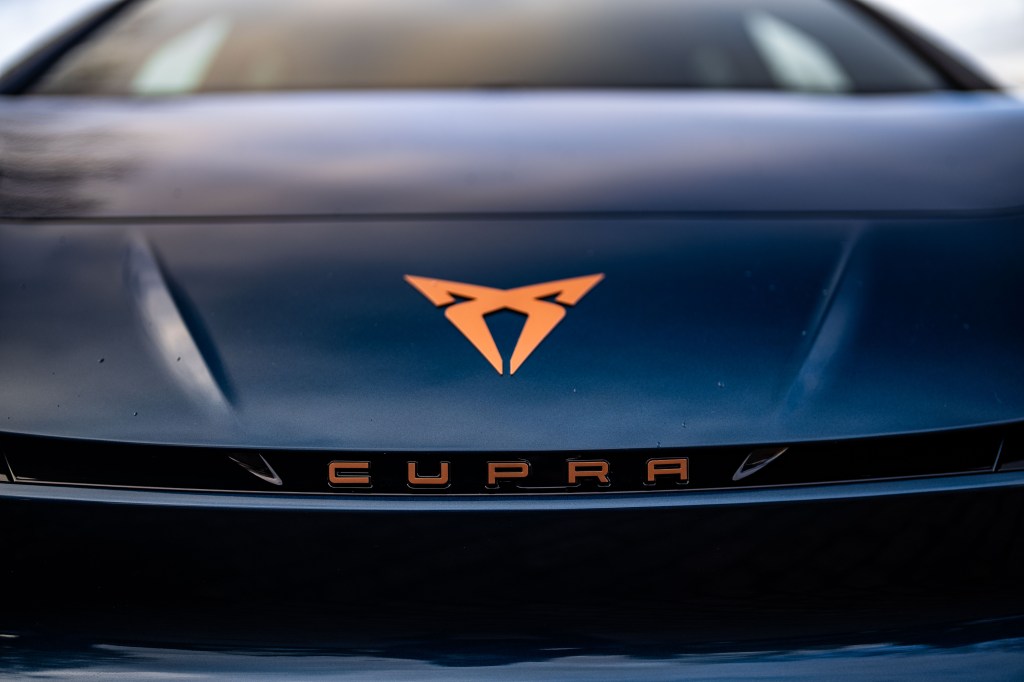
I promised a look at the practicality of the Cupra Born in this update but thought it might be a good idea to address that in a list of good and bad things about the car that I’ve found so far.
Here are the things that I really like about the car:
1. The looks
It looks great, obviously. I think I absolutely nailed the paint colour, interior and wheels. The Aurora Blue paint costs £880 but it looks gorgeous, particularly in the sun. I’ve seen quite a few Borns on the road since taking delivery and white and silver just don’t look as good, somehow. Grey is a bit uninspiring. Rayleigh Red is the best alternative, I’d say.
The blue also works brilliantly against the contrasting Cupra gold accents on the badge, CUPRA lettering and wheel trims.






And when I ordered those wheels I did so because they look good (in my opinion) but would also be easy to clean (I have reached my 40s and such are my priorities these days), which has proved correct.
Regards the interior, I had to remove the child seats yesterday and once I’d vacuumed up all the disgusting kiddy detritus it reminded me how lovely the Aurora Blue interior is, too. I also noticed the quality of the stitching and the lovely feel of the cloth. Still really pleasing after four months with the car.
2. It’s excellent in cold weather
Battery range does reduce when it’s cold outside, that’s true, but the optional heat pump means it gets toasty inside within seconds, and defrosting of ice within minutes. At nearly £1,000 the heat pump Is an option you’ll hover over in the configurator, but trust me it’s well worth it, not just for speedy cabin heating but also for maximising range (it’s much less energy-sapping than a traditional heater).
Then there are the heated steering wheel and heated seats, both of which warm up quickly, and I love. Finally the pre-conditioning via the phone app is a massive time-saver when there’s snow and ice to get off the car of a morning.
3. Cabin space is good
Although it only seats four (there are two seats in the rear, with no central seat belt), those four people will sit in comfort. For a hatchback the rear legroom and headroom is very decent indeed, and the floor in the back is flat improving space for feet and allowing children to climb through easily from the kerb side.
4. The driving position is excellent
This is true even for tall drivers, with the reach adjustment allowing the steering wheel to come a long way towards those who need to push the seats far back.
5. The infotainment system is slick
It could be a little quicker to operate but the design of the touchscreen operating system is attractive and it’s easy to run Apple Carplay and Android Auto, with a pleasingly large are for Waze or Google Maps. And unlike some other cars you can also jump straight to the Cupra’s heater menu with a single touch, if you want to turn on the heated seats or steering wheel, though as pointed out below it dedicated button for those on the dashboard or steering wheel would be vastly superior.





6. Lovely ride quality
As pointed out above, the suspension is lovely (despite what some other writers have clearly suggested, judging by the concern of one commenter below), with a creamy ride over most surfaces.
7. Boot size
The boot is a decent size, with underfloor storage for the charging cable. There’s no storage under the bonnet, though.



8. Ski hatch
The seats split 60:40 but there’s a central ski hatch in the rear, allowing long items to be slid through without folding the seats.
9. Reactions from passengers
Any times we give a lift to someone, whether a child or an adult, they’re impressed with the Born. People comment on how classy it is, and use words such as “cool” and “futuristic”.
10. Cupra button
Having the Cupra button on the wheel is really useful when you need the full beans from the motor, for overtakes.
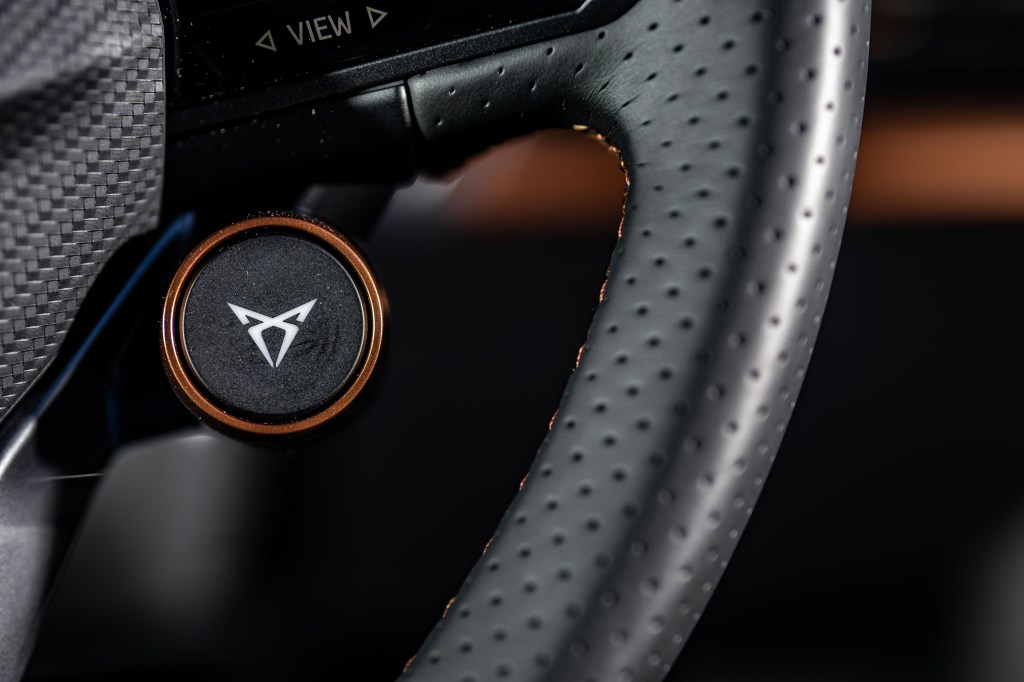
At the risk of the accusation of #firstworldproblems, let’s look at things that are not so great:
1. Blind spot
There’s a blind spot to the right of the windscreen due to the thickness of the A pillar. The large “quarter light” window helps, but it’s still noticeable. And it gets even worse when it rains because the wiper doesn’t quite go to the edge of the screen, so you’ve got quite a thick, wide section of car that you can’t see through. I noticed the same issue with the VW ID. Buzz electric van recently, so it’s clearly a VW Group-wide issue.



2. No roof gutter
After rain, if you set off with the windows open then at the next corner all the rain form the roof runs into the car, because the Born doesn’t have a gully or gutter at the edge of the roofline.
3. Touch-sensitive steering wheel buttons
It’s very easy to accidentally brush the capacitive (touch-sensitive) buttons on the steering wheel with your palm unless you hold the steering wheel at ten-to-two. If you’re a quarter-to-three kind of driver then it’s a bugger because you’re constantly setting off the sensors for the volume or cruise control. There’s no way to avoid this other than to adjust your hand position to nearer the top of the wheel. Again, this is common to other VW Group cars.
4. Volume and temperature controls
The main volume and temperature controls are on capacitive sliders below the touchscreen. Many journalists have lambasted the loss of dials, which are obviously superior for accuracy and ease of getting to the exact volume or temperature without really having to look. I’m a bit more relaxed about it but do agree with another criticism: that the sliders aren’t backlit, which means they’re less easy to find at night. The good news is that VW Group has said it will address this on future models.

5. Uneven heat on steering wheel
The heated steering wheel gets really warm at the top and the bottom, not so much at ten-to-two. A more consistent heat around the wheel would be better. And a button on the steering wheel or dashboard to activate it quickly would be much better; as it is, switching it on involves going into the heating menu of the touchscreen and pressing the button, which at the time of writing is on the left (passenger) side of the screen – clearly a hangover from left-hand-drive models.
6. Hidden heated mirror controls
The mirrors are heated on the 3 spec Born, though the control is on the armrest rather than simply activating when you switch on the window demister, and it is a twist of the dial rather than a dedicated button. It took me weeks before I found it.
This isn’t too much of an issue but I did notice that in the really cold weather we had at the start of the year, when I preconditioned the cabin temperature via the phone app (which is brilliant, btw), the mirrors remained frosty afterwards so they don’t appear to be linked.

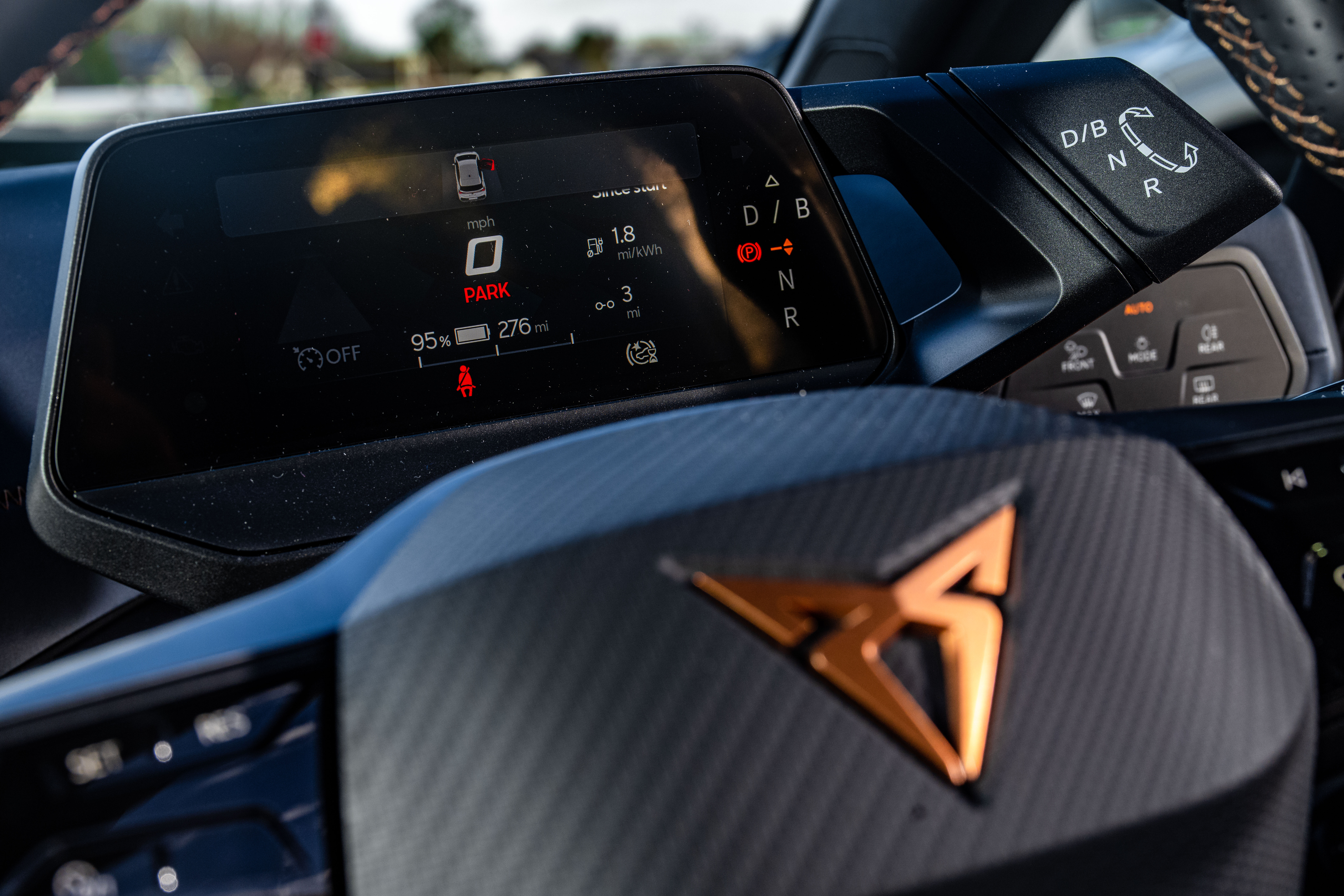
7. Confusing drive select rocker
The Drive Select rocker behind the steering wheel isn’t especially intuitive, and once or twice I’ve found myself putting the car in forward when I meant to go reverse, which could obviously have disastrous results. My wife sometimes drives the car and she mentioned she had the same issue at first but has now got used to it. But get in while half asleep one day and you might end up wishing it had a sliding gear select lever instead.
8. Aerial strength
The DAB reception of Times Radio is patchy near my home, whereas other cars have no issue, suggesting the aerial isn’t as powerful.
9. It doesn’t have five seats
The Cupra Born is strictly a four-seater. Would it have been hard to add a central perch in the rear?
10. Jittery traction control
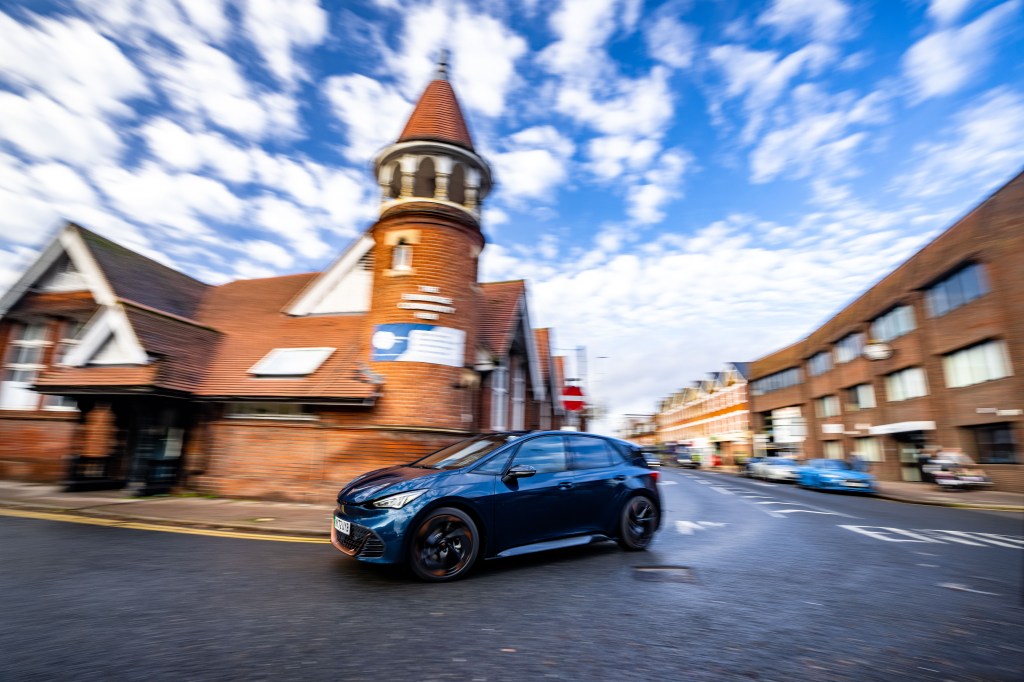
In loose and slippery conditions the traction control can make the car feel jittery at the back, as it repeatedly cuts power to the driven rear wheels. This might help the average driver but it’s an unpleasant feeling, and actually it would be more useful for experienced drivers to be able to switch off the aids and apply controlled oversteer to keep the car moving in the right direction. Particularly as the car has a natural tendency to understeer.
11. No lane-keep assist button
There’s no easy way to turn of the lane-keep assist (you have to go through submenus on the touchscreen). This makes it too difficult to stop the wheel being tugged when crossing lane markings, which is unhelpful both on country lanes and in towns, where road markings often need to be crossed and the on-board camera and computer system gets confused.
The fact that I’ve listed more negatives than positives perhaps paints a bleak picture, but that doesn’t tell the true story. In fact, most of the negatives are niggles and the overall ownership experience is really great. In fact, Cupra may have to prise my wife out of the car when it’s collected — of all the cars that have been delivered to our home for testing, the Born has had the biggest impact on her.
- Mileage today 1,606 miles
- Distance since start 1,536 miles
- Indicated long term consumption 2.9 miles/kWh
If you’d like to ask me a question about the car, please message me on Twitter or comment below; I try to check comments every week.
Follow @wdron Tweet to @wdronMay 31: The honest truth about living with an electric car
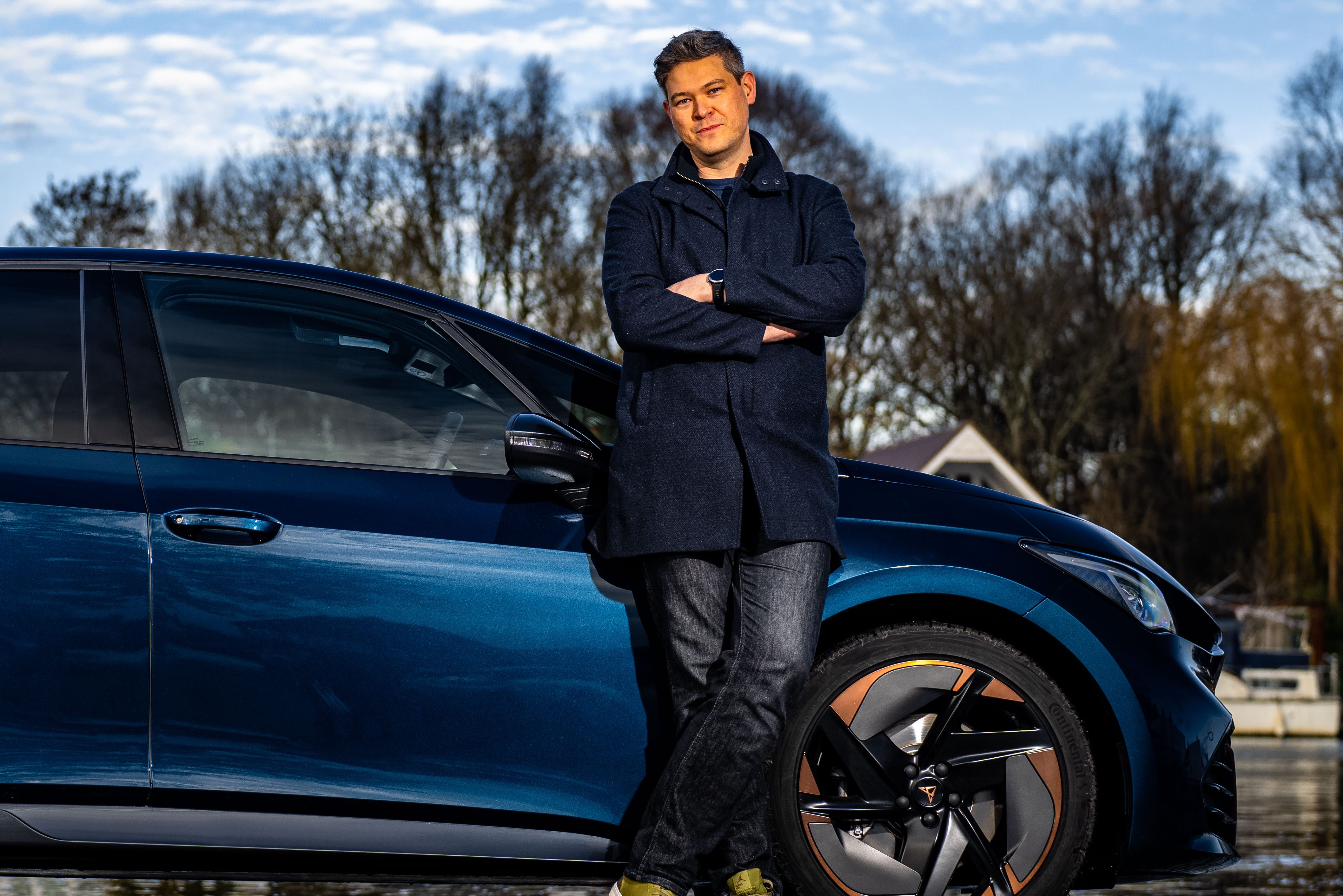
Having test driven electric cars since the launch of the first Nissan Leaf in 2010, sometimes I need to remind myself that many people — indeed most people — still haven’t driven an electric car. Yet we know sales of new petrol and diesel cars will be banned from 2030, and hybrids from 2035, so everyone is at least thinking about the switch to EVs, and that can be a daunting prospect. There’s a lot of information and misinformation out there, so here’s the honest truth about living with an EV, and the Born in particular: it’s great… for me, at least, but probably most people, too.
What I mean by that is that no car is “one size fits all” — everyone has different tastes and needs. Some want a large car that is good for weekly trips to the tip while others want something compact for weaving around tight county lanes or city streets. The Born, with its four seats, is perfect for my family of four in terms of size, but if you need five seats it won’t be right for you.
With electric cars, things get more complicated because where you live makes a massive difference to their suitability. The Times today reports on a potential crisis in EVs because the pace of vehicle sales is outstripping public charger installations, but that ignores the fact that 80 per cent of drivers charge at home right now.
And we don’t need one public charger for every car, nor do we need an even distribution of chargers around the country; we need them to be installed in sufficient numbers at particular locations to meet demand at peak times. We also need them all to be in good working order, which isn’t always the case, but networks with a poor record are increasingly being called out and regulation is being implemented to clamp down on operators who fail to keep their chargers maintained.
In my time with the Born I’ve been on a number of fairly long-distance trips and only on one occasion did I have to wait for a rapid charger, and then it was three minutes before I managed to plug in. The charger — one installed by GridServe — at a motorway service station did then have a wobble and stopped charging after 10 minutes, but fortunately the MyCupra phone app alerted my to the issue and I went back to the car to restart the charge, after which all was well. The chap next to me with a Kia EV6 had the same issue, so it was definitely an issue with the network, not the car.
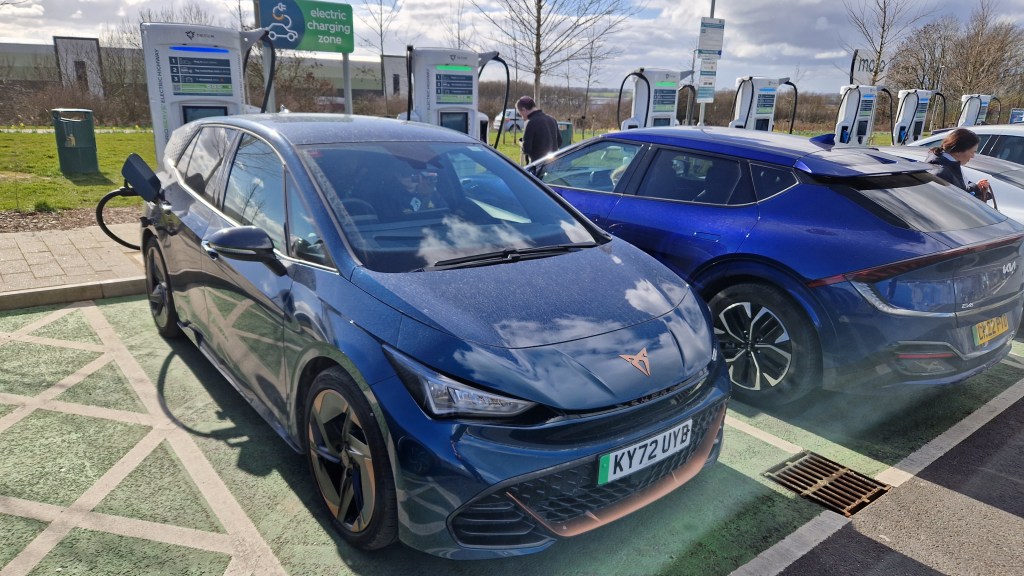
With experience you learn to keep an eye on the charge status — not to trust that it will be fine every time — though speed of charge and reliability are much better than in 2010, I can tell you. After 30 mins the Born was back up to 80 per cent and we were back on our way, having been fed and visited the lavatories in the meantime.
I’ve since driven from my home in Walton-on-Thames to a work event in Bristol using mainly motorway – a journey of 106 miles — and still had 60 per cent battery left when I got there, which suggested another 172 miles were possible. So I know that in this Born (with the larger battery, it should be said again, and in moderate temperatures — it was 14 degrees C that day), I can drive that distance and back on motorways without needing to plug in.
…with this Born, which has the larger battery and an official 335-mile range (WLTP), motorways aren't an issue, either. I drove to Bristol mostly on the M4 recently (106 miles) and still had 60% battery, meaning I wouldn't need to use public chargers to get home. 3/4 pic.twitter.com/fhtQPRQQg4
— Will Dron (@wdron) May 26, 2023
Colder weather would have reduced the range but A- and B-roads, at lower speeds, would have allowed me to go further. Such knowledge takes a lot of the stress out of travelling, and I’ve also driven to Bedford and back without even thinking about running out of juice. It just wasn’t a consideration. I’ve come up with some further tips that you might like to check out before buying an EV — click on the following link.
You don’t need to be able to charge up at home to own an EV, as I found out during six months with a Mini Electric, but having installed a dumb three-pin socket at the end of my garden (by a professional electrician) I can tell you that it makes life with an EV a lot easier… and much cheaper. Public charging costs typically around 70p per kWh at a rapid charger right now, whereas my electricity at home (on Octopus Energy’s Flexible Octopus tariff) costs 44.25p during the day and 17.74p/kWh at night.
That means a full charge of the battery on a rapid charger would cost £53.90, but at home the maximum it would cost is £34.07p.
Wondering how often I charge? Because I don’t commute by car every day, I don’t need to plug in more than twice a week and the ultra-slow three-pin charge is (adding around 7 miles per hour) is enough for my uses. An 11kW wallbox is much quicker — a full charge takes 7 hours 30 minutes, so plugging in overnight is likely to mean you have a full battery every morning.
If you live in a terraced house and park on street, you might find you can have a charging cable gully installed in the pavement; Gul-e is one company providing such a service.


Another solution, now commonplace in London, is lamp post charging — the Shell-owned Ubitricity provides that service and standard pricing is 40p per kWh.
I suppose what I’m trying to get at here is that some articles elsewhere may make you anxious about switching to electric, but in my time with the Born I’ve absolutely never felt any “range anxiety” whatsoever. In fact it has been brilliant, and I’ll be sorry to see it taken away next month.
- Mileage today 2,523 miles
- Distance since start 2,453 miles
- Indicated long term consumption 3.1 miles/kWh (warmer weather is boosting the long-term average — 3.8m/kWh is common for daily trips now)
If you’d like to ask me a question about the car, please message me on Twitter or comment below; I try to check comments every week.
Follow @wdron Tweet to @wdronRelated articles
- After reading this extended test review of the Cupra you might be interested in our review of the Genesis GV60, a premium electric SUV
- Cupra announces three new models by 2025 including UrbanRebel, an electric supermini with a range of up to 273 miles
- Take a look at all the carmakers’ electric vehicle plans
Latest articles
- Audi S5 2024 review: Audi smells blood in battle with BMW
- F1 2024 calendar and race reports: What time the next grand prix starts and what happened in the previous rounds
- AA calls for graduated licensing scheme to prevent deaths of young, inexperienced drivers
- Porsche Macan 2024 review: Entry-level electric SUV is a marathon runner, not a sprinter, but that doesn’t affect its all-star athletic appeal
- How your 10-year-old can get behind the wheel of a Mercedes, Porsche or Bentley … and why you should do it
- Lotus Eletre 2024 review: Is the electric Lotus SUV an abomination or a class act?
- Prices for hot Nissan Ariya Nismo announced … red sill strip light included
- Return of the Renault 4: Full details and images from Paris motor show unveiling
- Elon Musk unveils ‘Cybercab’ robotaxi for claimed 2026 rollout and offers guests first rides … in controlled environment


